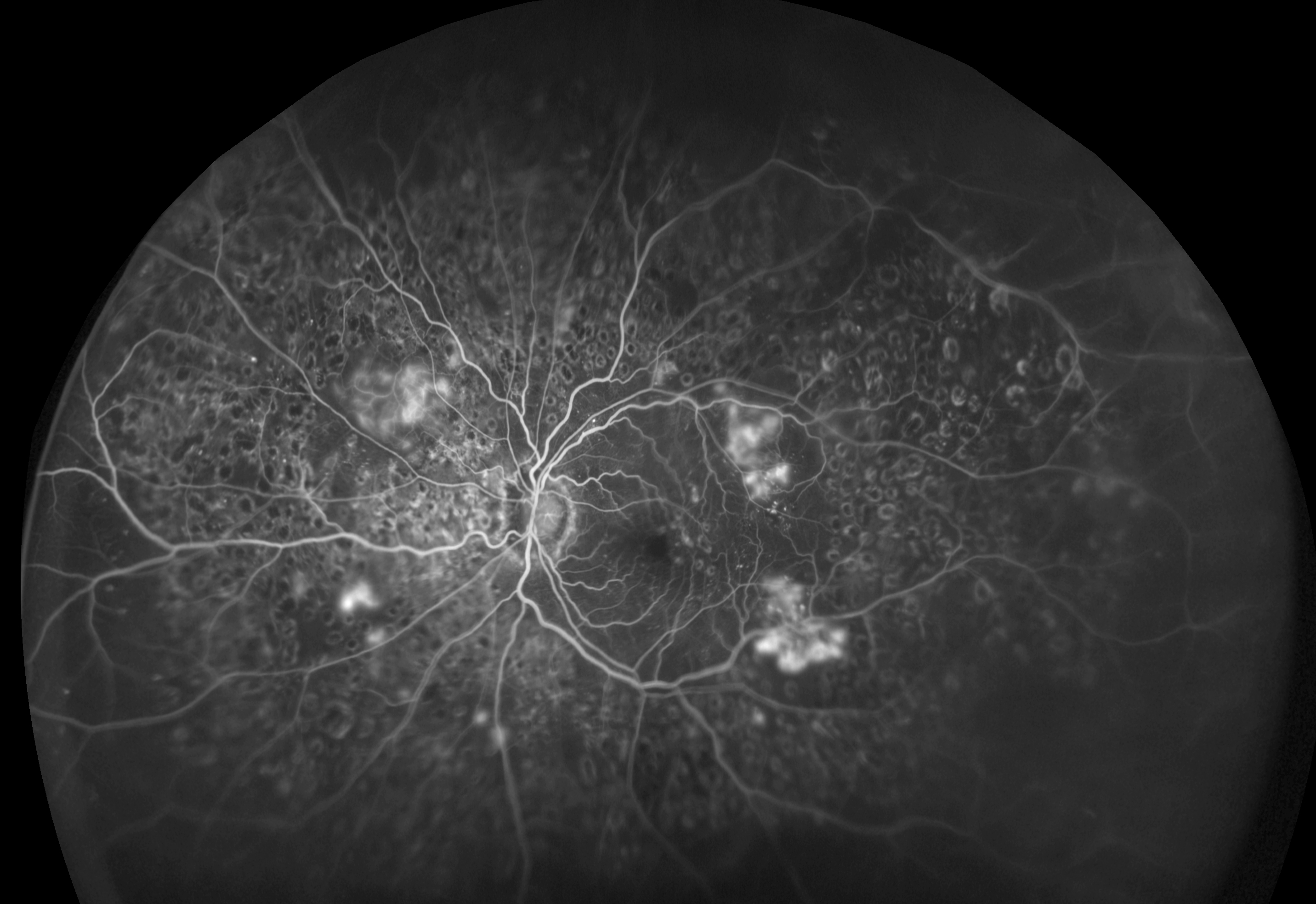 |
| Over five years, only 4% of 80-year-olds and 2.4% of 85-year-olds in this study were referred to a hospital eye clinic for DR, and less than 1% received treatment. Photo: Optos. Click image to enlarge. |
Editor’s Note: As part of our “Year in Review” retrospective, we’ve selected the top 30 news stories of the year and are re-sharing them as we close out 2023. Follow along as we count down to number 1!
This story was originally published May 24, 2023.
No. 14 biggest news story of 2023:
Due to the heightened risk of retinopathy in patients with diabetes, it’s recommended that those with the disease receive eye examinations annually. More recent research, however, suggests that screening may only be necessary once every two years in patients with the lowest risk of diabetes-related sight loss. In 2020, Public Health England introduced these extended intervals.
To assess whether patients aged 80 to 90 fall into this low-risk category and can safely receive exams less frequently than every 12 months, researchers recently performed a five-year study on patients being monitored for diabetic retinopathy (DR) in digital surveillance clinics. Included were 1,880 patients aged 80 and 1,105 patients aged 85 at baseline. During follow-up, 21% and 49% of the 80- and 85-year-old cohorts passed away, respectively.
Between 0.7% and 1.4% of the 80-year-old cohort was referred to a hospital eye service for DR each year. Over five years, a total of 4% of the 80-year-old patients were referred to the hospital for DR, and a mere 0.6% of those received treatment. Similar but slightly lower numbers were reported in the 85-year-old cohort. Between 0.1% and 1.3% of these patients were referred each year to a hospital eye service for DR. A total of 2.4% of 85-year-olds were referred throughout the course of follow-up, and of those, only 0.4% were treated.
All patients in both cohorts who received treatment did so for maculopathy. Notably, no cases of proliferative DR requiring treatment were reported.
“This study showed that the risk of progression of retinopathy over five years is quite low in this elderly age group (80 to 90), and only a small proportion of patients developed referable retinopathy requiring any treatment,” the researchers summarized in their paper on the study, published in Eye. “This raises the question of the need for annual diabetic eye screening in this age group.”
The authors bring up the point that screening attendance rates tend to decline as age increases, something that extended screening intervals may help address. The cost-effectiveness of less frequent exams is another potential benefit to patients.
The researchers concluded that this new data calls for a review of current guidance on screening recommendations for elderly patients with diabetes and no signs of retinopathy.
Thomas K, Albutt N, Hamid A, et al. Five-year outcomes of digital diabetic eye screening in individuals aged 80 and 85 years. Eye. May 20, 2023. [Epub ahead of print]. |


